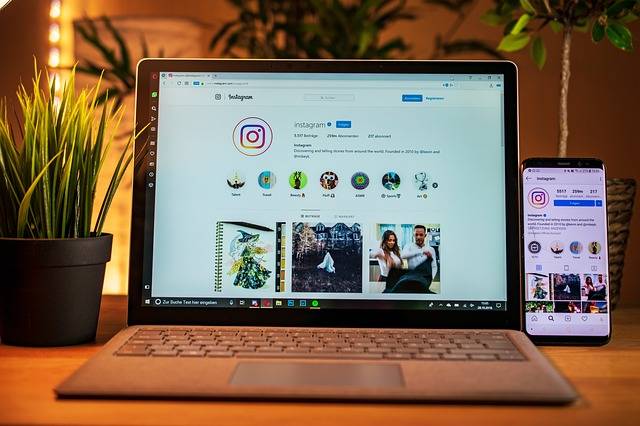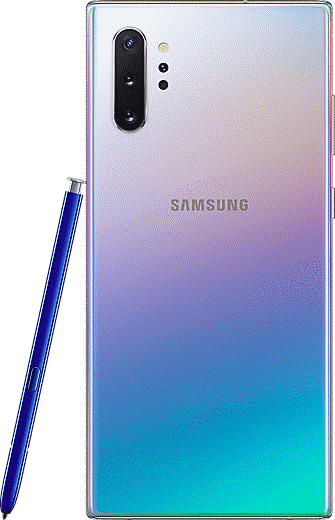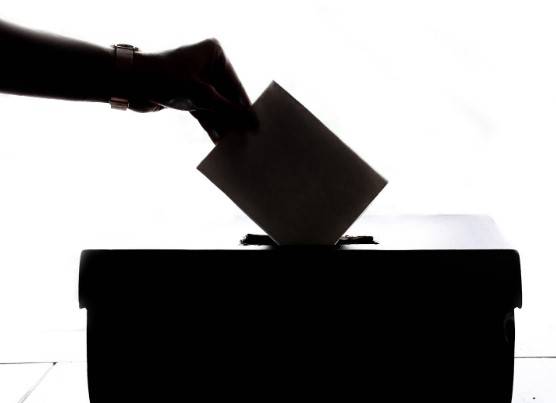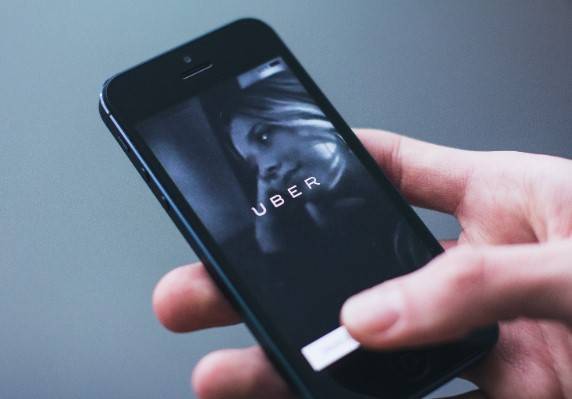Video Transcript
Marianne: …information about products on social media, but how much does it pay off for those big brands?
Cody: You mean, like this fancy cup from CBS?
Marianne: Now that’s a good network. I’m going to watch those guys.
Cody: Julissa is with Ryan from Nerds On Call with more.
Julissa: Just wait for it. Sales are going to spike for that cup, all because of you, Cody. All because of you.
Cody: I’m an influencer.
Julissa: All right, so let’s talk Instamarketing. It’s a thing, a big thing.
Ryan: It is a huge thing. So…well, hold on, let me go here. Okay so, with Facebook, Instagram, WhatsApp, 2.5 billion users are on these platforms. And one thing you gotta keep in mind is that these people that are on here, a lot of times if you’ve got a decent following, they may be selling something. And they may not always be totally upfront about it. So let me give you some examples here. Here’s someone famous, right?
Julissa: I’ve heard the name. Kylie Jenner. You might recognize the name.
Ryan: Is it Ja- Jen, anyway…? So she’s, for example, she’s schlepping some tea here, right? She’s like, “Hey, buy some freaking tea.” She’s a tea salesperson. That’s who she is. That’s why she’s famous.
Julissa: And that’s not an awkward pose at all.
Cody: She wasn’t even trying either. She’s like, “Eh, [crosstalk 00:01:09]”
Ryan: I like the hair hold thing or the butt shot. Okay, let me go back to this. That’s called influencer marketing. And the interesting thing is you can be an influencer even if you have less than a thousand followers.
Julissa: Interesting.
Ryan: Did you know that?
Julissa: No, I did not.
Ryan: Let’s talk about some of this cool stuff. The reason why influencer marketing works is because most people don’t see them as salespeople. They see them as friends or trusted advisors and things like that. And they post these pretty little pictures and you’re like, “Oh, I wanna look just like this person.” And so they buy the things that they’re talking about. Excuse me. So here’s Kim in head to toe Fendi, next to a trash can.
Julissa: It’s a Louie Vuitton trashcan.
Ryan: Oh, okay. Well, when she did this picture, there was a 16% increase in searches for the Fendi brand. Now this one, I don’t remember her name. What’s her name again?
Julissa: This is the sister. That’s Kylie.
Courtney: That’s the sister.
Ryan: That’s Kylie, right? All right, so she wore…this is one of the many outfits she wore for her birthday. And after she wore this, 107% increase in searches for pink dresses.
Julissa: Just for searches.
Ryan: Just for searches, that’s it. How crazy is that? This is a $10 billion industry according to “Forbes” magazine. But here’s the dark side. So there were brands that were actually paying for negative reviews of competitors, $85,000 to say something bad about an alternate makeup company.
Julissa: Not cool.
Ryan: But you could make so much money with this kind of thing, 300 grand if you’re on YouTube and have over 7 million followers. But look, if you just 100 to 500k, you still can still make 1250 a year. That’s pretty great. So to give you an example, $25,000 just for mentioning a product or a brand. If you do like a dedicated review, 50 to 60, 75 to 80 if you make a negative review of a competitor. Pretty good deal. So, the FTC has certain rules. Like on CBS, for example, if we were schlepping a product…
Cody: You mean, like this CBS cup?
Ryan: …we have to say, “Hey, we got paid for this,” or whatever. So you have to do that on Instagram too, but they don’t always do that. So here’s Kim again, schlepping…I don’t know what this is, some energy drink. But I don’t see anything in here about it being an ad, but it is an ad.
Julissa: She just hashtags the name of the drink, yeah.
Ryan: And so you can kind of see how that can be a little confusing. You’re like, “Well, she likes it. So she’s popular. Maybe…I’m gonna try it out.” So just keep in mind that there are bad things about this sort of stuff. And last thing is if you’re an influencer and you have less than a thousand followers, you’re called a micro-influencer.
Julissa: Micro, oh.
Ryan: And a lot of these companies will come to you and try to get you to sell their products. But here’s the thing about micro-influencers. Not only are they cheap for brands to pick up, but they often will say things…whatever the brand wants them to say. So unsubstantiated claims, things like that.
Julissa: So you gotta watch out for that.
Ryan: So if you see somebody selling stuff or talking about a product, just be a little suspicious. It could be weird.
Julissa: Interesting. It’s a whole new ballgame, Ryan. Interesting. All right, thanks for the insight, Ryan. Nerds On Call, always here to help on all things…really anything, as you just heard.
Ryan: And look, the other thing, just real quick. So look, Julissa’s only got 8100 followers, you guys. She needs to make a little cheddar. So come on, give her some more followers. Look at poor Court over here, 8182. I won’t even get started on…oh, he’s not really influential at all.
Julissa: He’s a Twitter guy.
Cody: I’m a Twitter guy, yeah.
Julissa: He’s got a lot of followers on Twitter. All right, oh my goodness, a whole new ballgame, right?
Ryan: My mom needs a new dress.
Julissa: All right, back to you.
Cody: I work for CBS and I can’t wait for another NCIS.
Marianne: That’s right. That’s right.
Cody: Des Moines. All right, along with people, animals are also in big need in help…
Chances are, you’ve heard the word “influencer” being bandied about recently. If you’re a bit puzzled why this perfectly harmless verb has suddenly become a slightly ominous noun, this article will hopefully shed some light. In the process, we aim to give you some solid advice on how to spend your money wisely in the age of social media.

Marketing In The Age Of Social Media — A Thirty Second History
Once upon a time, products were sold by experts.
A chef would appear on your television brandishing a gleaming set of cooking knives and would tell you all about how these items were precision culinary instruments, and how you needed a whole set in your kitchen if you wanted the best for your family.
Products were also sold by another set of people, who could be broadly classed as “pretty.”

You know the deal. An attractive person would be plastered on a giant billboard somewhere, looking all smoldering and desirable while driving the latest model of luxury vehicle you simply had to own.
Experts and Pretty People Got Boring…
Of course, both these kinds of selling have been going on for a long time and continue to this day, but somewhere along the way, something happened. Selling stuff using experts and pretty celebrities began to become less effective.
Consumers became sick of it. They had seen it all before.
They became skeptical of these endlessly repeated techniques to convince consumers to spend their moolah.
Then Social Cred Became a Big Deal…
Meanwhile, the Internet happened. And soon after that, social media crept into and (probably) forever changed the human experience.
Suddenly it didn’t require big advertising money to gain lots of attention! It simply required the right, elusive combination of self-promotional savvy and cultural cred. Those who mastered this art of being noticed on social media stumbled into immense social significance.
And Big Money Arrived
People were interested in what they did. They wanted to be like them. They listened to what they had to say. From a marketing point of view, it was a case of “if you can’t beat them, join them!”

Today, an influencer might earn anything from a few hundred bucks up to thousands of dollars to casually mention or be seen using a product or service.
And just like that, the age of The Influencer and influencer-led marketing has arrived.
Influencer Marketing Works … Kind of
One could be forgiven for thinking this whole influencer business is ridiculous.
But it does work.
After Kim Kardashian posted a picture of herself on Instagram in head-to-toe monogrammed Fendi, searches for the brand increased 16% in the following month.
In the 48 hours following Kylie Jenner’s birthday party, to which she wore (among other outfits) a pink minidress, searches for pink dresses spiked by 107%.
The influencer brand marketing industry is estimated to be worth more than $100 billion.
But Influencers Got Greedy…
The problem is that while it works purely from a marketing point of view, now that vast money has been injected into influencer endorsements, there’s a giant question mark over how reputable these endorsements actually are.

Furthermore, a negative influencer review (whether made on a whim or worse, on behalf of a competitive brand) can destroy an upcoming brand.
In a recent Bazaarvoice survey of consumer preferences, 49 percent of consumers felt that some restrictions should be placed on the content influencers are creating. 47 percent of customers reported feeling tired of inauthentic content published by influencers.
And There’s No Simple Way to Regulate it
While the Federal Trade Commission has tried to place some restrictions on how influencer marketing works, right now it’s something of a wild frontier. Negative reviews, unsubstantiated claims, and even outright blatant deception are rampant—andnigh on impossible to monitor let alone regulate.
Takeaways For Consumers
Which really all boils down to the fact that the best protection you have from untrustworthy influencer marketing isn’t going to come from the FTA or some other regulatory body.
Your single best defense is your own skeptical brain.

Here are a few helpful things to remember:
- If you see someone on social media pushing a product, realize there’s a very real chance they’re being paid large sums of money to do so. They may have never even tried the product!
- If you see a negative influencer review, ask yourself if they’re being paid to throw shade on a person or brand.
- Influencer marketing is a $100 billion industry. It’s entirely reasonable to assume that the vast majority of influencers are marketers first and content-providers second.
Love it or hate it, influencer marketing is going to be around for some time to come. The best thing we can do as consumers is to understand it for what it is: a gigantic, marketing-driven industry.
Marketing isn’t a bad thing! If you dig capitalism then it’s hard to have a beef with the marketing oil that greases the machine. But it’s important to have your head screwed on and to approach influencers with a healthy dose of skepticism.
Like This? We have more!
Sign up below to be kept in the loop and be sent more content like this in the future!






